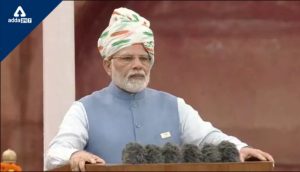
This year India is celebrating 76th Independence Day on 15th August 2022 to mark the country’s freedom from nearly two centuries of British colonial rule. Prime Minister Narendra Modi is leading the celebrations from Red Fort in New Delhi and is addressing the nation from Red Fort in New Delhi. This is his ninth address as the prime minister. To celebrate the 75 years of Independence the Government of India has started an initiative called “Azadi Ka Amrit Mahotsav”.
Independence Day 2022 Is 75th Or 76th?
On March 12, 2021, Prime Minister Narendra Modi has launched the “Azadi Ka Amrit Mahotsav” to celebrate and commemorate 75 years of independence that started a 75-week countdown to our anniversary of independence. This means that India will celebrate its 76th Independence Day on August 15, 2022, and mark the end of its 75 years of freedom.
Buy Prime Test Series for all Banking, SSC, Insurance & other exams
Independence Day honours the sacrifices of our courageous leaders and freedom fighters, who gave their all for the sake of the nation and the countrymen. This day serves us the perfect opportunity to travel back in time and reflect on the history and significance of this date.
Indian Independence Day 2022: History
The Englishmen entered Surat and Gujarat in 1619 for trading purposes. After the victory of the English East India Company at the Battle of Plassey in 1757, the Britishers made their control over India. The British Government dominated over the people of India for almost 200 years starting from 1757. Legendary freedom fighters and leaders like Bhagat Singh, Chandrashekhar Azad, Netaji Subhas Chandra Bose, Sardar Vallabhbhai Patel, Mahatma Gandhi and others sacrificed everything to see India as a free nation.
The Indian Independence movement began during World War I and was led by Mohandas Karamchand Gandhi. On August 15, 1947, India got its freedom, ending an almost 200-year British rule. India’s first prime minister Jawaharlal Nehru raised the Indian national flag above the Lahori Gate of Red Fort in Delhi on August 15, 1947. It is a tradition that has since been followed by the incumbent Prime Minister, followed by an address to the country.
What is the Indian Independence Act 1947?
Lord Mountbatten was eventually given power by the British Parliament to transfer power by June 30, 1948. However, observing the people’s impatience, Mountbatten realised that if he waited until June 1948, havoc will be created, which is why he advanced the process to August 1947. This announcement was followed by the agitation by the Muslim League and the demand for the partition of the country. Congress and the Muslim League accepted the plan. The immediate effect was given to the plan enacting the Indian Independence Act of 1947.
Some Interesting points:
- Five other countries celebrate their independence on August 15 along with India. They are Bahrain, North Korea, South Korea and Liechtenstein.
- Even after India’s independence, Goa was still a Portuguese colony. It was annexed to India by the Indian Army only in 1961. Thus, Goa was the last state to join the Indian territory.
- While India gained independence from British rule on 15th August 1947, there were certain regions which still remained under European control. The French had control over Puducherry. The French transferred the territories under its control to India on 1st of November 1954.
- The Indian national flag with three horizontal stripes of red, yellow and green was hoisted on August 7, 1906, at Parsee Bagan Square in Kolkata. The first variant of India’s current national flag was designed by freedom fighter Pingali Venkayya in 1921.
- The current flag with saffron, white and green colours and the Ashok Chakra in the middle was officially adopted on July 22, 1947, and hoisted on August 15, 1947.
- The Indian flag is manufactured and supplied from only one place in the nation. The Karnataka Khadi Gramodyoga Samyukta Sangha (KKGSS), located in Dharwad in Karnataka, has the authority to manufacture and supply the Indian national flag.
- According to the Bureau of Indian Standards (BIS), the flag is manufactured only with hand-spun and handwoven cotton khadi wafting.




 World Basketball Day 2025 Celebrates Bas...
World Basketball Day 2025 Celebrates Bas...
 UN Celebrates Second World Meditation Da...
UN Celebrates Second World Meditation Da...
 Winter Solstice 2025 Observed on Sunday,...
Winter Solstice 2025 Observed on Sunday,...







